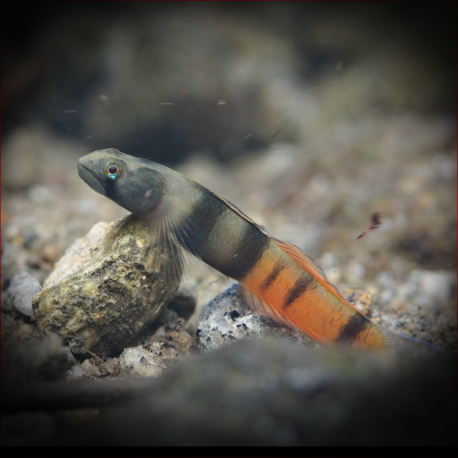More info
Datasheet
| Minimum Tank Size | 60 litres / 15.85 US gallons |
| Maximum Size | 4.5cm / 1.77inches |
| Temperature | 22°C / 71.60°F - 26°C / 78.80°F |
| Hardness | 2.02dgH / 36ppm - 12.05dgH / 215ppm |
| pH | 6.0-7.5 |
Behaviour:
This species can be kept in a community aquarium if tankmates are carefully selected. They are peaceful and pelagic, naturally found in well-oxygenated streams. Suitable tankmates include Tanichthys, Microdevario, smaller Danio species, various characins, small poeciliid livebearers, and freshwater shrimp. It is advised to avoid aggressive or territorial species, big fishes, and most cichlids. While Sicyopus spp. can be kept together in larger tanks, it is recommended to have a single male with two or more females. They tend to exist in loose groups with females of different species grouping together, while males can differentiate between them.
Feeding and Diet:
This species is a specialized predator and does not graze on biofilm in the aquarium. They readily accept small live or frozen foods such as bloodworms, Artemia, and Daphnia, but dried foods are usually ignored. They are not suitable companions for small live invertebrates due to their predatory nature.
Reproduction & Dimorphism:
Observations of courtship behavior exist, but raising fry of any Sicyopus species in aquaria has not been successful. These gobies have a complex breeding strategy called amphidromy where adults spawn in freshwater streams, and post-hatch larvae are washed downstream before returning. Adult males exhibit long unpaired fins and extended first dorsal fins, while females lack these characteristics. Males are colorful with darkish anterior bodies and orange to red posterior portions, while females are essentially colorless.
Habitat and Distribution:
Sicyopus Zosterophorus are found in short coastal streams on tropical islands above waterfalls. They coexist with Stiphodon gobies, Macrobrachium shrimp, and neritid snails. The preferred substrates are bedrock with scattered rocks, and these fish thrive in clear, well-oxygenated water. The species is distributed widely across regions like the Marquesas Islands, Indonesia, the Philippines, Japan, and southern China.
Aquarium Setup:
For a Sicyopus Zosterophorus tank setup, maintaining well-oxygenated and clean water in warmer aquariums is crucial. It is recommended to have an over-sized filter or additional aeration methods. Substrates can include gravel, sand, or a mix, topped with rocks and pebbles. Provide hiding spots and consider the addition of hardy aquatic plants. Regular water changes and a secure cover are essential due to their ability to climb glass and jump.
Water Conditions:
- Hardness: 36-215ppm
- pH: 6.0-7.5
- Temperature: 22-26°C

